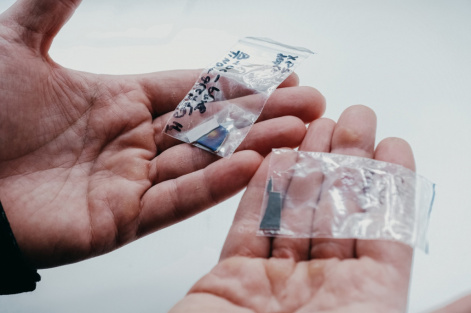Krasnoyarsk scientists have created a new material for thin films and revealed its unusual properties.
23 August 2021 г.

Thin films based on titanium nitride are widely used in various industrial and technological fields, for example, in the production of silicon microprocessors and other large integrated circuits, photocatalysts, converters of solar and thermal energy into electricity, in dentistry, and even in the manufacture of church domes. Due to high electromagnetic resistance and its weak temperature dependence, chemical inertness, as well as the ability to withstand high powers and temperatures, there are currently no analogues to replace them.
Scientists of the Federal Research Center "Krasnoyarsk Science Center SB RAS", Siberian Federal University and M.F. Reshetnev Siberian State University obtained a new material for thin films from copper-doped titanium oxynitride. It has an electrical resistance a thousand times lower than that of ordinary titanium nitride. Studying the resulting compound, physicists discovered a new phenomenon of copper segregation, with the copper being accumulated on the film surface rather than distributed over the entire film, as is usually observed.
The discoveries of the Krasnoyarsk physicists resulted from a chain of random technical errors and investigation of their consequences. Initially, the researchers planned to obtain pure titanium nitride to be used to make resistors in integrated circuits. However, everything did not go according to plan. Oxygen impurities appeared in the film growth chamber. Therefore, instead of the planned pure substance, the scientists obtained titanium oxynitride at the output. Moreover, it possessed unusual properties. The resistance of the resulting substance turned out to be a thousand times lower than that of pure titanium oxynitride.
Oxygen trapped in the chamber is suspected to be the reason for the unusual properties of the material. To test this, scientists tried to neutralize it. Therefore, hydrogen was introduced into the chamber before growing the film. Hydrogen was expected to react with oxygen and, forming water vapor, to remove it out of the chamber. However, this did not bring the expected effect and the resistance of the films remained low.
Scientists continued to "investigate" this phenomenon until they found copper impurities in the films. As it turned out, the copper got into the films because of the misassembled equipment. The gas cylinder used in the installation had a brass valve instead of a stainless steel one. It was from brass that copper particles appeared, flying due to the gas directly into the growth chamber. Moreover, the amazing discoveries are not over. Copper brought another couple of surprises. Its behavior turned out to be not typical: it was not distributed over the entire film, but accumulated on its surface and formed an additional layer. As a result, the Krasnoyarsk scientists not only obtained the new material, but also discovered the new phenomenon, the copper segregation. And they did it in a relatively cheap way by the standards of modern industries.
“We have been putting this puzzle together for three years. When the resistance of the resulting titanium oxynitride was measured, it was found to be very low compared to the pure material. We were confused. We began to examine the films, and it turned out that they contained an admixture of copper. This changed our whole idea, because copper conducts electricity very well. Further research showed that instead of being evenly distributed over the film, copper began to float to the surface and accumulate there into a narrow layer of 5-10 nanometers. As a result, we discovered a new phenomenon of copper segregation. The fact that it is not stirred, but pushed out is very good news for technologists. Moreover, we accidentally caught a phase transition between the state of heavily doped copper and low doped copper. The transition turned out to be quite interesting from the viewpoint of physics. By varying the extent of doping, different types of conductivity can be obtained. In the case of heavy doping, a semimetal both with the metal and nonmetal properties was obtained from copper. As a result, we got the ability to create conductive layers. This can be useful in instrumentation, for example, for devices that operate at high frequencies. Therefore, this development in the future may be useful for devices which need low resistance, for example, transistors, resistors, capacitors, photocatalysts and solar-selective absorbing coatings, ” said Philip Baron, a researcher at the Kirensky Institute of Physics KSC SB RAS.
The study was carried out with the financial support of the Russian Foundation for Basic Research, Krasnoyarsk Regional Science Foundation (No. 20-42-240013) and Megagrant of the Government of the Russian Federation for the creation of world-class laboratories (No. 075-15-2019-1886).
Share:
